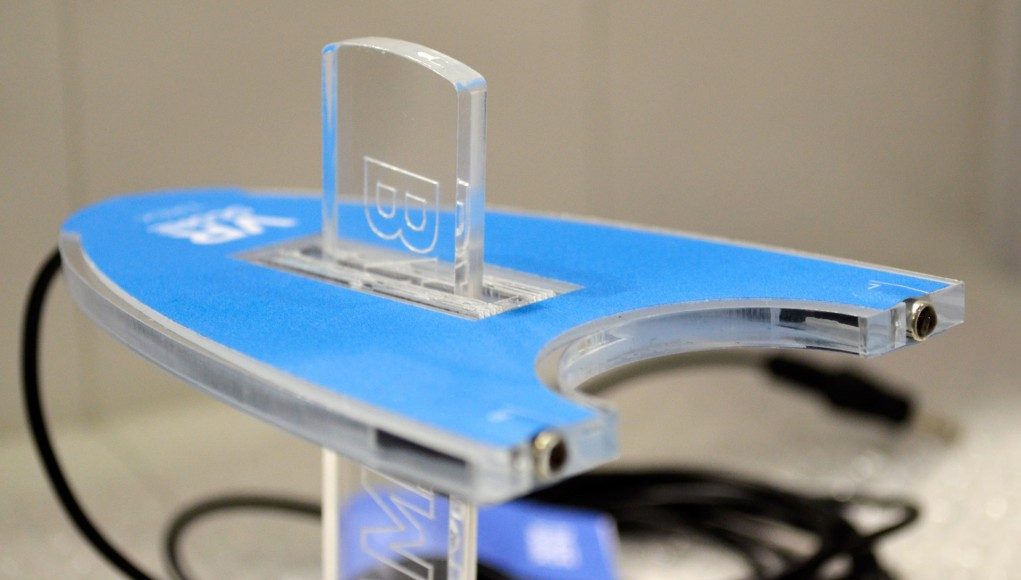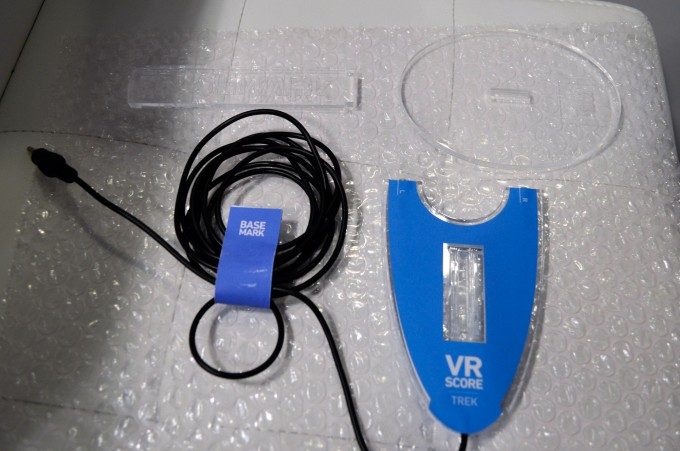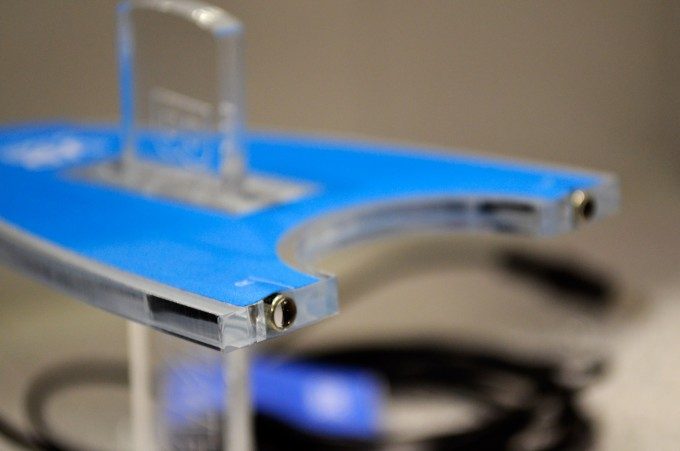Helsinki based Basemark has created a simple device called the Trek which works with their forthcoming VRScore benchmark to measure the latency of VR headsets in both left and right eyes.
The VRScore Trek is an elegantly simple device that consists of three pieces of plastic, two photodiodes, and a cable that ends in the same 3.5mm plug you’d find on your earbuds. From a fold-flat state, the unit pops up quickly and can be raised and lowered to align the prongs with the left and right lenses of a VR headset.
The Trek plugs into a PC via that 3.5mm jack (presumably into the Microphone-In port); using the PC to coordinate timed flashes on the VR headset’s display, the Trek then sends analog measurements of brightness right through the microphone port. The VRScore benchmark takes these readings and compares timing of the flash command and the actual flash to determine latency.
At GDC 2016 Basemark CEO Arto Ruotsalainen showed me the simple device and told me that it can measure latency with sub-millisecond precision. The patent-pending unit is included with the Corporate version of VRScore which is available via Basemark’s early access program and Benchmark Development Program. A free version of the benchmark will be made available to consumers in June.
See Also: First Look – VRMark Benchmarking Suite Analyzes VR Headsets & Hardware
Basemark is collaborating with game engine maker Crytek on the creation of VRScore which the company says can test the performance of VR games, video, and spatial audio.









